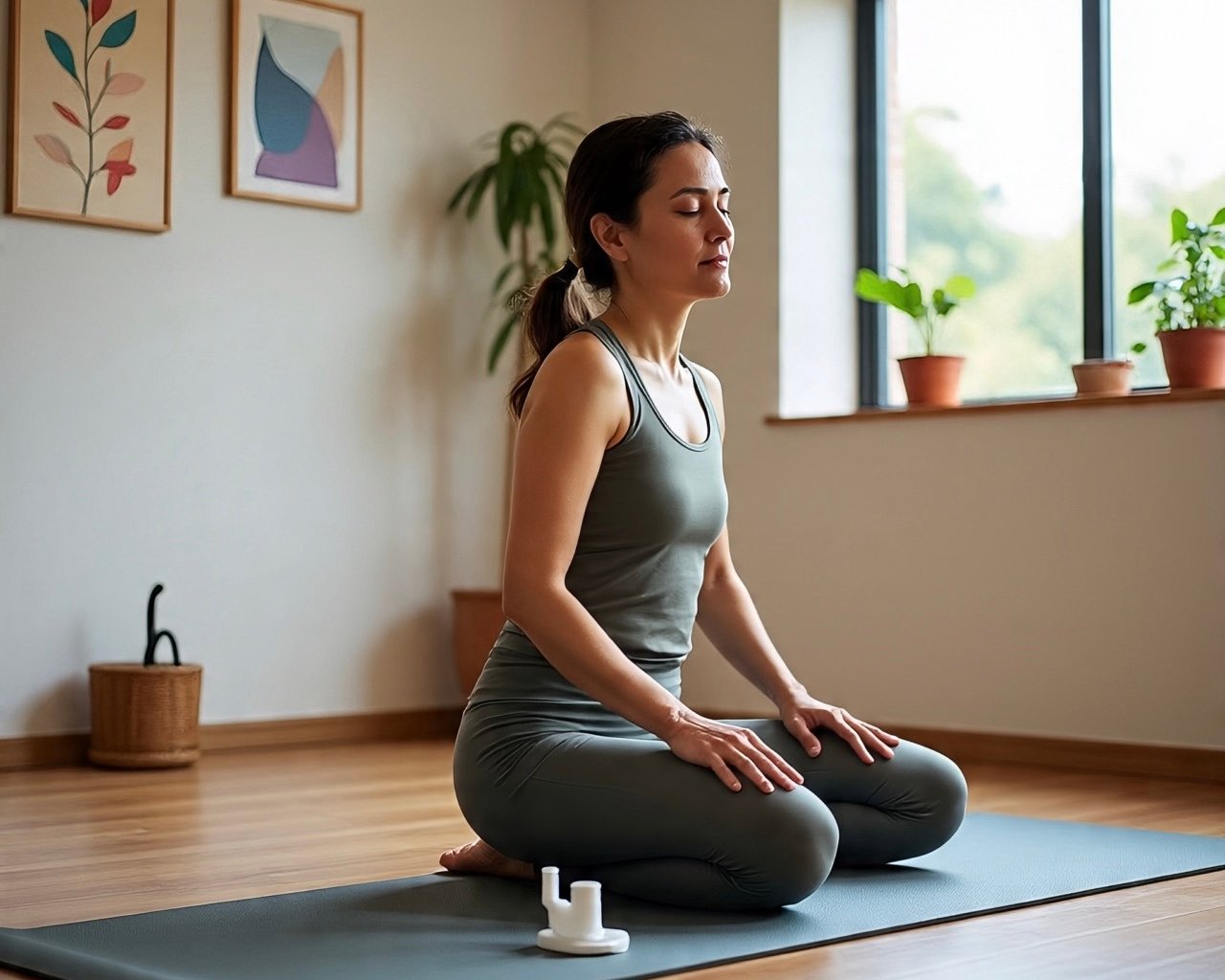Struggling with asthma? Discover 5 simple yoga poses that naturally support lung function, reduce stress, and ease breathing.
Asthma narrows your airways, making breathing difficult. Medications help—but yoga offers a gentle, natural way to support your lungs.
Practising yoga regularly helps improve lung capacity, calm your mind, and reduce inflammation triggered by stress and poor posture.
Studies show yoga can lower asthma attacks and reduce the need for medication. But how exactly does it help?
🧘♂️ Key Benefits of Yoga for Asthma:
- Encourages deep, controlled breathing
- Expands chest and improves lung function
- Reduces anxiety—a major asthma trigger
- Enhances oxygen flow and posture
Unlike cardio workouts, yoga is low-impact and breath-centered—making it ideal for those with respiratory conditions.
🧘 5 Yoga Poses That Can Ease Asthma Symptoms
These yoga poses focus on breath, posture, and muscle control. Practice them daily for best results—under guidance if needed.
1.
Adho Mukha Svanasana (Downward-Facing Dog)
Purpose: Opens lungs and stretches spine for better airflow
How to Do It:
- Begin on all fours with hands and knees aligned
- Exhale as you lift your hips, forming an inverted “V”
- Keep your heels grounded and hands firm on the mat
- Hold for 10–15 seconds while breathing slowly
Why It Helps: Improves oxygen intake, eases upper-body stiffness, and supports the diaphragm.
2.
Setu Bandhasana (Bridge Pose)
Purpose: Expands chest and improves lung circulation
Steps:
- Lie on your back, bend knees, and place feet hip-width apart
- Arms stay at your side with palms down
- Inhale deeply, lifting the pelvis upward
- Clasp hands under your back and push shoulders down
- Hold for 10 seconds
Why It Helps: Boosts lung function, calms nerves, and relieves tension in the chest and spine.
3.
Chakrasana (Wheel Pose)
Purpose: Enhances chest expansion and oxygen flow
Steps:
- Lie on your back, bend knees, and place hands near your ears
- Inhale and push your body into a high arch
- Relax your neck, keep breathing, and hold for 5–10 seconds
Caution: Avoid this pose during asthma attacks or without supervision.
Why It Helps: Increases lung ventilation and relieves tightness in the chest and upper back.
4.
Paschimottanasana (Seated Forward Bend)
Purpose: Promotes calmness and deeper abdominal breathing
Steps:
- Sit upright with legs extended straight
- Inhale and stretch your arms up
- Exhale as you bend forward from the hips, reaching your toes
- Hold for 5–10 seconds with gentle breathing
Why It Helps: Calms the nervous system, reduces stress, and improves focus on breath.
5.
Healing Walk (Barefoot Walking with Breath Awareness)
Purpose: Combines mindful movement with breath control
How to Practice:
- Walk barefoot on grass or smooth ground
- Inhale while raising arms overhead, exhale while stepping forward
- Walk slowly and mindfully for 3–5 minutes
Why It Helps: Improves breathing rhythm, boosts oxygen flow, and eases anxiety.
🧘♂️ Breathing Tips for Yoga with Asthma
- Inhale during chest-opening poses
- Exhale during forward bends and contractions
- Avoid holding your breath for long
- Switch to Balasana (Child’s Pose) if you feel discomfort
⚠️ Safety First: Precautions for Yoga with Asthma
- Never practice yoga during an active asthma attack
- Avoid dusty or allergen-filled environments
- Continue prescribed medication unless advised by a doctor
- Start with gentle poses and gradually build up under guidance
❓ Q&A: Yoga and Asthma—What You Need to Know
Q: Can yoga replace asthma medication?
A: No. Yoga supports your treatment but never replaces prescribed medications. Always follow your doctor’s advice.
Q: How often should I do yoga for asthma relief?
A: Ideally, 20–30 minutes of yoga, 3 to 5 days a week, can provide steady improvements in lung health and stress control.
Q: Is yoga safe for children with asthma?
A: Yes, but only under supervision. Simple poses and breathing exercises can be adapted safely for kids.
🔍 FAQs
✅ Which type of yoga is best for asthma?
Hatha Yoga and Restorative Yoga are ideal. They focus on breath, posture, and slow movement without straining the lungs.
✅ Can I do yoga during an asthma attack?
No. During an attack, avoid deep movements. Instead, sit in Child’s Pose and breathe slowly until the attack subsides.
✅ What’s the best time to practice yoga for asthma?
Morning is best. Practising in fresh, clean air helps clear the lungs and energizes you for the day ahead.
💡 Final Thoughts: Use Yoga to Breathe Freely, Live Fully
Yoga won’t cure asthma, but it can empower you to manage it better. Regular practice boosts lung power, lowers stress, and enhances overall well-being.
Start with simple poses, listen to your breath, and take it slow. Over time, you’ll breathe deeper, move easier, and feel more in control.
Breathe with purpose. Move with care. Live with ease.




